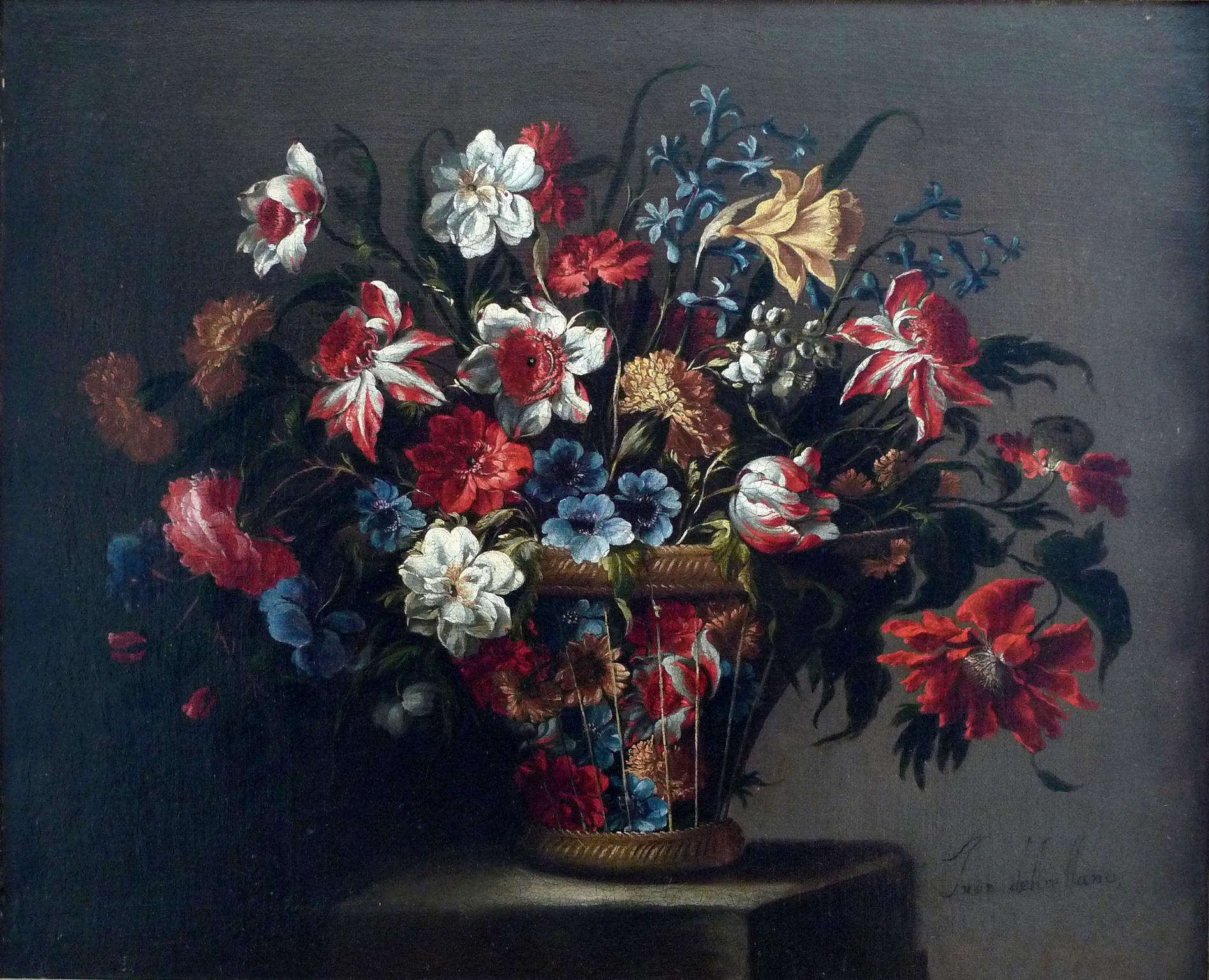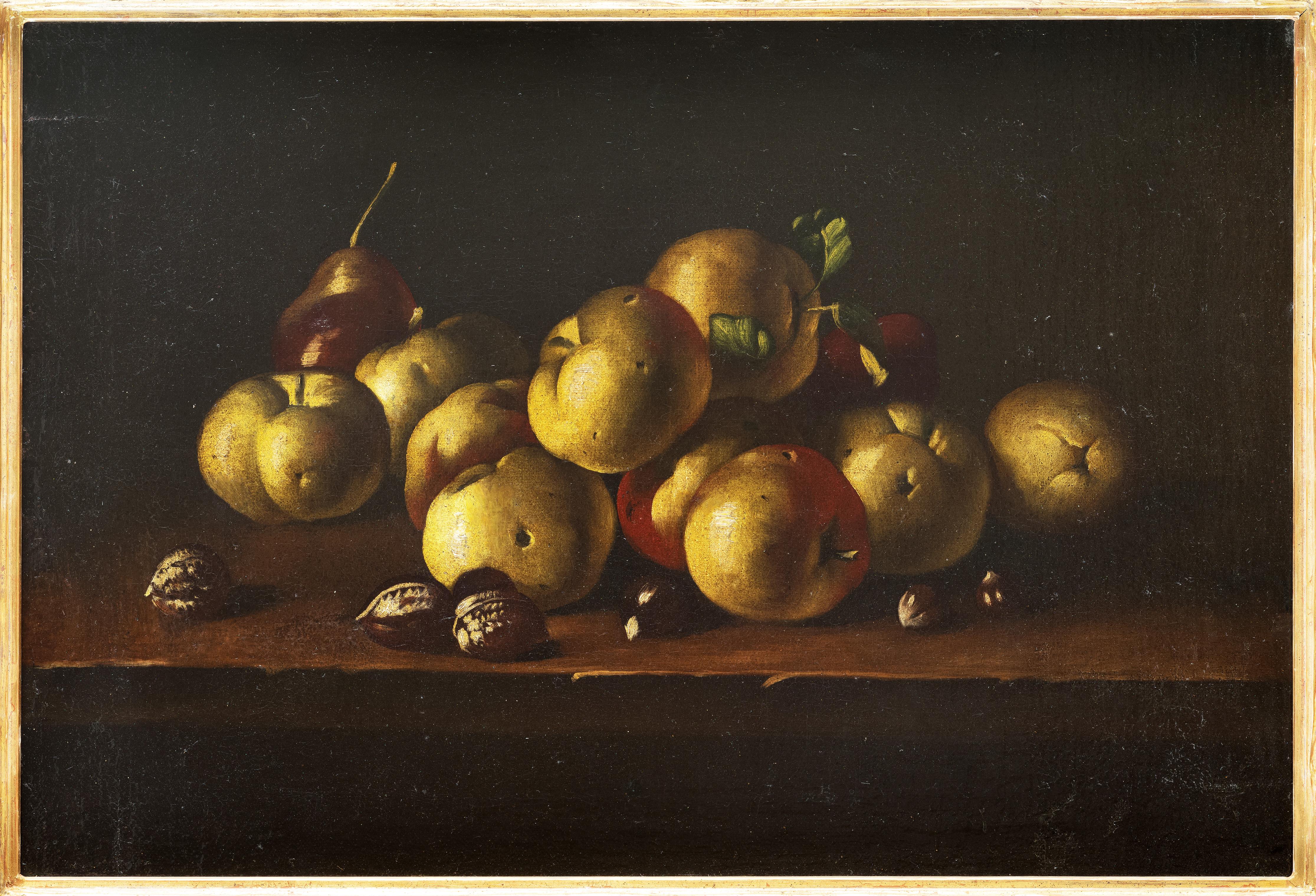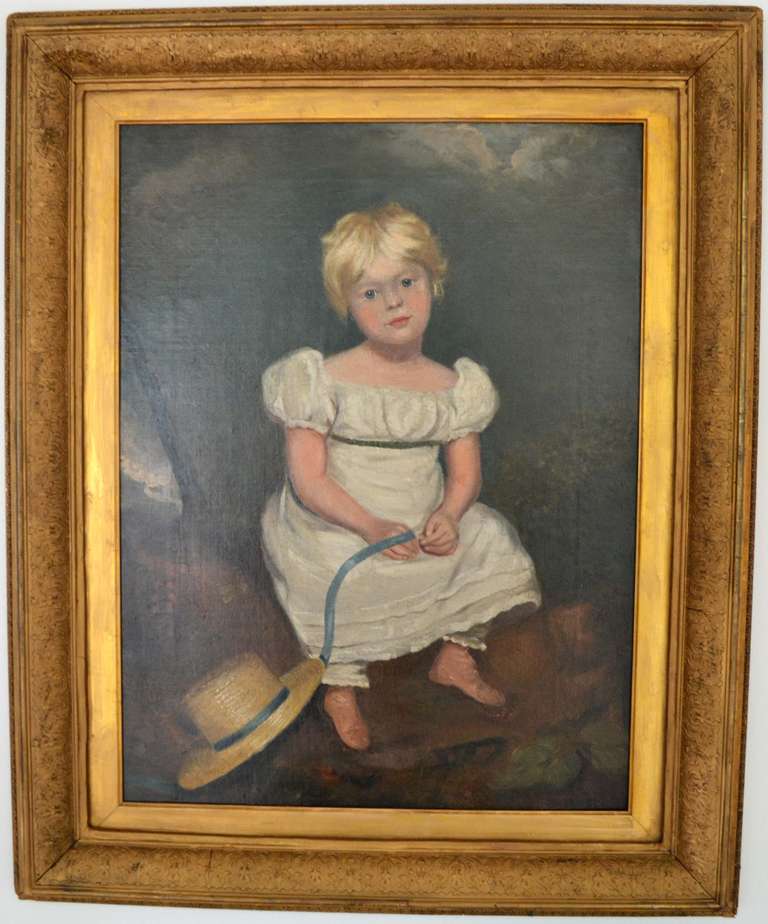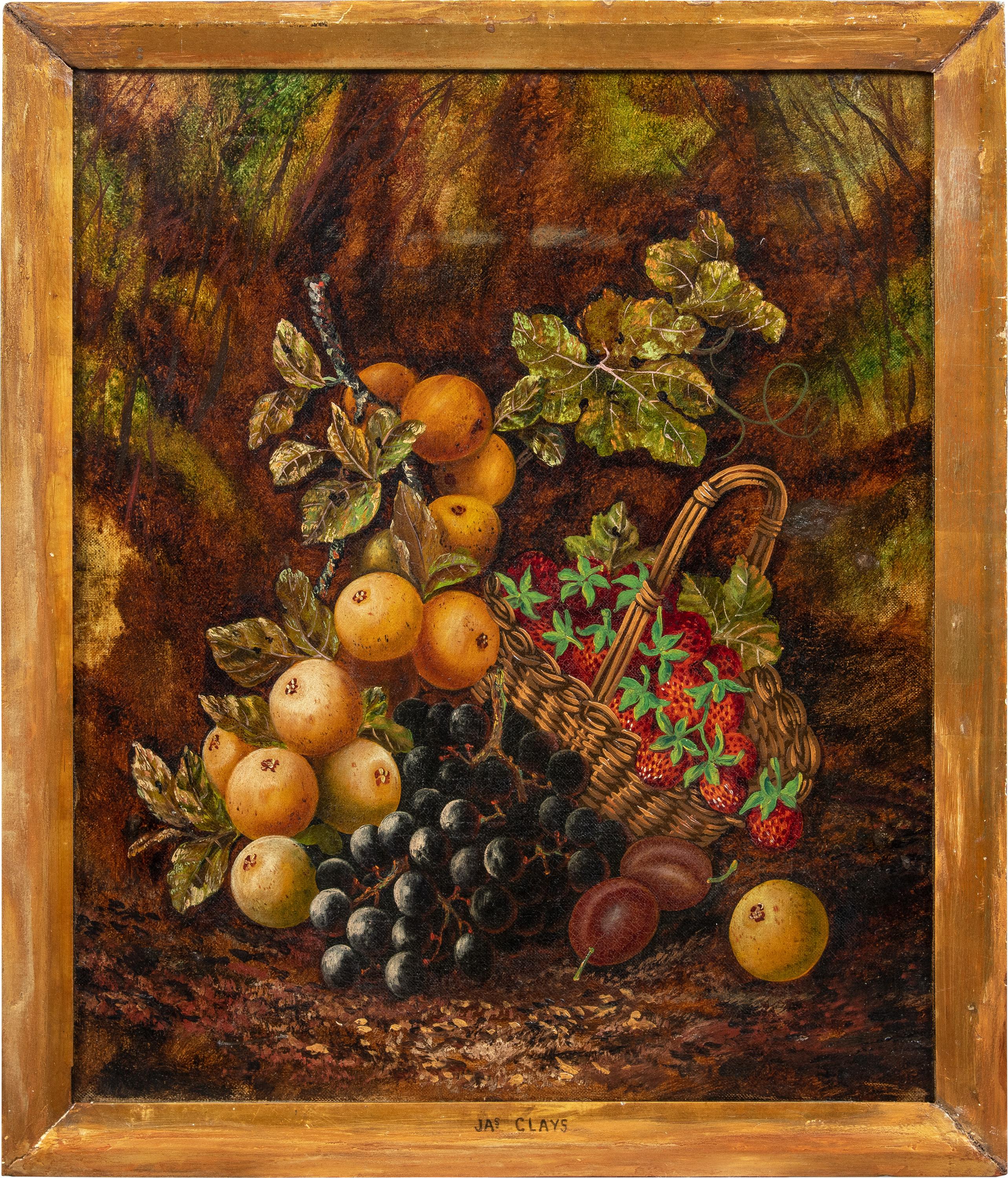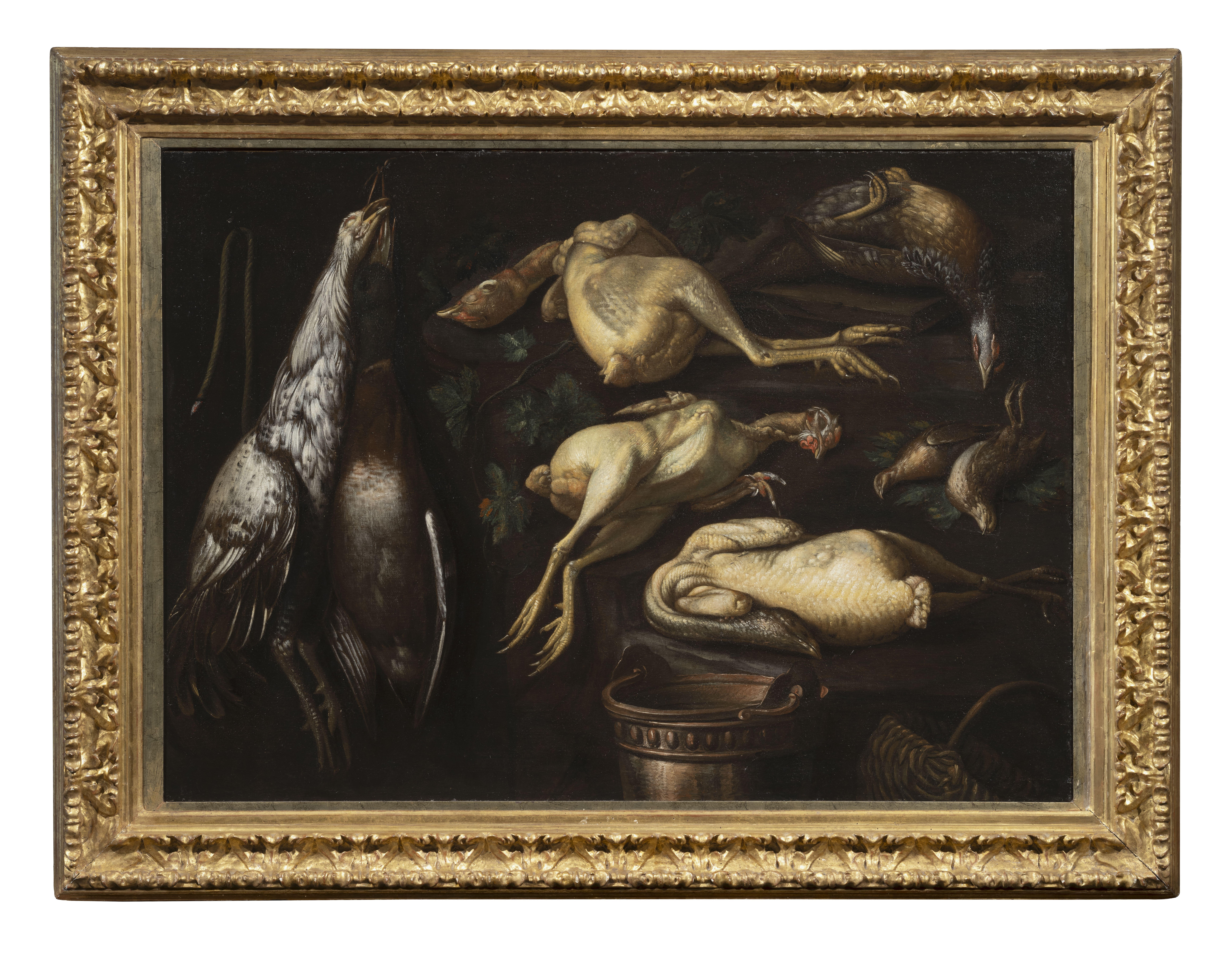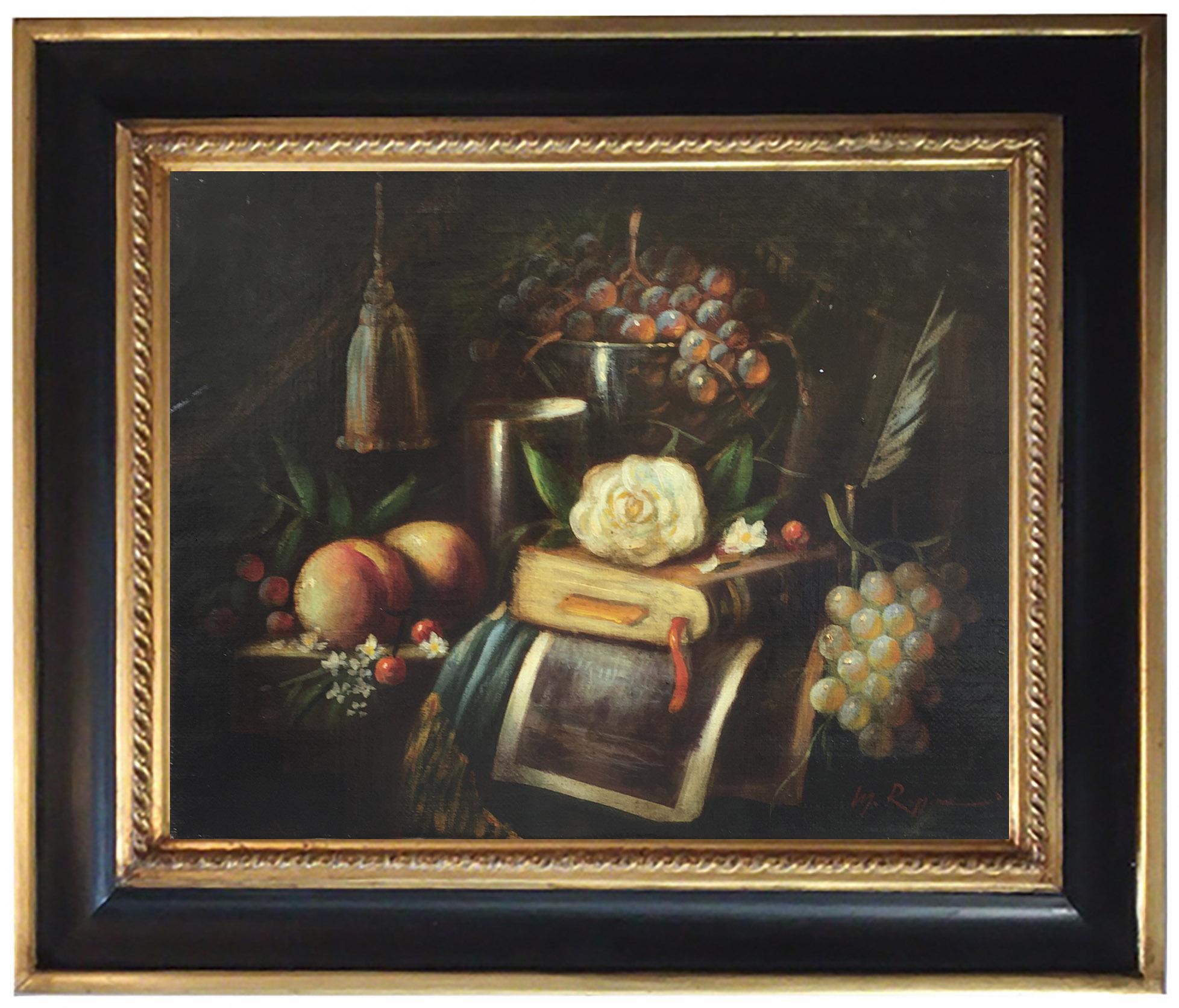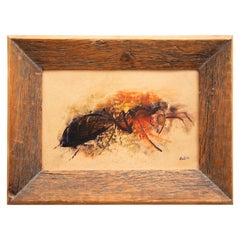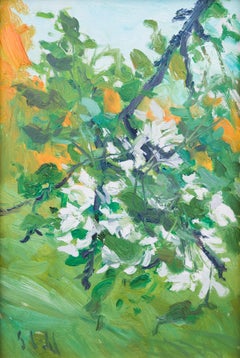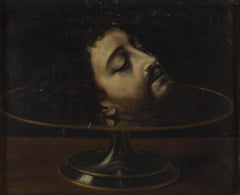
Head of Saint John the Baptist - by a Follower of Andrea Solario, Old Master
View Similar Items
Video Loading
Want more images or videos?
Request additional images or videos from the seller
1 of 7
Andrea Solario (follower of)Head of Saint John the Baptist - by a Follower of Andrea Solario, Old Masterc. 1700s
c. 1700s
About the Item
- Creator:Andrea Solario (follower of) (1460 - 1524)
- Creation Year:c. 1700s
- Dimensions:Height: 13.39 in (34 cm)Width: 16.15 in (41 cm)
- Medium:
- Movement & Style:
- Period:
- Condition:slightly yellowed varnish, cracks in the color that have come with age. gives a good impression.
- Gallery Location:Stockholm, SE
- Reference Number:Seller: CA20071stDibs: LU144527103012
About the Seller
5.0
Platinum Seller
These expertly vetted sellers are 1stDibs' most experienced sellers and are rated highest by our customers.
Established in 2020
1stDibs seller since 2020
112 sales on 1stDibs
Associations
International Confederation of Art and Antique Dealers' Associations
More From This SellerView All
- Floral Symphony, 1936 by Rackstad Group Artist Ture AnderLocated in Stockholm, SETure Ander (1881-1959) Sweden Floral Symphony, 1936 oil on board signed and dated Ture Ander 36 board dimensions 24,41 x 18,90 inches (62 x 48 cm) frame 2...Category
1930s Modern Still-life Paintings
MaterialsOil, Board
- Ant Battle by Eugen Kask, Oil on Panel, Signed, 1978, Free ShippingLocated in Stockholm, SEEugen Kask was born January 18, 1918 in Kiev, died May 11, 1998 in Vimmerby; he was an Estonian-Swedish painter. He was the son of the architect Kristjan Kask and Maria Lass and from 1948 married the telephone operator...Category
1970s Animal Paintings
MaterialsOil, Panel
- Spring Blossom Impression by Swedish Plein Air Artist Anders StåhlLocated in Stockholm, SEAnders Ståhl, Swedish painter, born 1966. Since modernism, outdoor painting has largely been forgotten by professional painters, but the Swedish artist Anders Ståhl keeps the historical tradition of Plein Air alive. Not least when it comes to partly lost working methods in the field. For Anders, this has been a most natural way of creating since childhood; to interpret what he sees and feels, by drawing and painting. Quickly capturing impressions in the field is one of the most demanding ways of painting you can imagine, since you are simultaneously fighting against both time and the elements. Back in the comfort of the studio, there is so much more time to interpret and perhaps work with larger formats. Anders has a strong artistic relationship with painters from the mid-1800s to the early 1900s, especially the French impressionists and Nordic landscape...Category
2010s Post-Impressionist Landscape Paintings
MaterialsOil, Board
- Ant Battle Oil Sketch by Eugen Kask, Oil on Panel, Signed, 1978Located in Stockholm, SEThe painting in question captures the dynamic energy of a moment seemingly frozen in time—an oil sketch by Eugen Kask featuring two ants engaged in an intense wrestling match. Kask’s approach to this piece is fluid and spontaneous, with broad, swift strokes that lend an air of immediacy to the scene. Much of the canvas remains untouched, its raw state highlighting the areas where Kask chose to concentrate his efforts, thus drawing the viewer's gaze directly to the central action of the ants. This decision to leave the background undefined gives the work a sense of incompleteness, a characteristic that is often celebrated in studies and sketches for its authenticity and connection to the artist's initial spark of inspiration. Eugen Kask, born on January 18, 1918, in Kiev and passed away on May 11, 1998, in Vimmerby, was an Estonian-Swedish painter of diverse talents. A descendant of an architectural lineage, with his father Kristjan Kask and his own background in architecture and fine arts, Kask brought a structural eye to his compositions. His life, marked by the upheaval of wartime displacement, led him to Sweden where his contributions to art continued to flourish through exhibitions and group showcases. His work spans a variety of subjects from pastoral landscapes to intimate animal studies...Category
1970s Animal Paintings
MaterialsOil, Panel
- A Bouquet of Digitalis, Poppy, Iris, Snapdragons, Cornflower, Buttercup, 1936Located in Stockholm, SETure Ander (1881-1959) Sweden A Bouquet of Digitalis, Poppy, Iris, Snapdragons, Cornflower, Buttercup. 1936 oil on board signed and dated Ture Ander 36 board dimensions 24,41 x 18,...Category
1930s Modern Still-life Paintings
MaterialsOil, Board
$3,200 Sale Price22% Off - Shipping in Stormy Waters, Attributed to Italian Artist Francesco GuardiBy Francesco GuardiLocated in Stockholm, SEThe splendour of the tragic sea Francesco Guardi and maritime painting in Venetian art No Venetian painter was a stranger to the sea. After all, Venice was not only one of the most prominent ports of the Mediterranean, but indeed a city literally submerged in the ocean from time to time. Curiously however, the famous Venetian school of painting showed little interest in maritime motifs, favouring scenes from the iconic architecture of the city rather than seascapes. That is why this painting is a particularly interesting window into not only the painter Francesco Guardi himself – but to the significance of the element of water in art history, in absence as well as in the centre of attention. Whether it be calm, sunny days with stunning views of the palaces alongside the canals of Venice or – more rarely – stormy shipwrecking tragedies at sea, water as a unifying element is integral to the works of painter Francesco Guardi (1712–1793). During his lifetime, Venetian art saw many of its greatest triumphs with names like Tiepolo or Canaletto gaining international recognition and firmly establishing Venice as one of the most vibrant artistic communities of Europe. While the city itself already in the 18th century was something of an early tourist spot where aristocrats and high society visited on their grand tour or travels, the artists too contributed to the fame and their work spread the image of Venice as the city of romance and leisure to an international audience, many of whom could never visit in person. Still today, the iconic image of Venice with its whimsical array of palaces, churches and other historic buildings is much influenced by these artists, many of whom have stood the test of time like very well and remain some of the most beloved in all of art history. It was not primarily subtility, intellectual meanings or moral ideals that the Venetian art tried to capture; instead it was the sheer vibrancy of life and the fast-paced city with crumbling palaces and festive people that made this atmosphere so special. Of course, Venice could count painters in most genres among its residents, from portraiture to religious motifs, history painting and much else. Still, it is the Vedutas and views of the city that seems to have etched itself into our memory more than anything else, not least in the tradition of Canaletto who was perhaps the undisputed master of all Venetian painters. Born into his profession, Francesco lived and breathed painting all his life. His father, the painter Domenico Guardi (1678–1716) died when Francesco was just a small child, yet both he and his brothers Niccolò and Gian Antonio continued in their fathers’ footsteps. The Guardi family belonged to the nobility and originated from the mountainous area of Trentino, not far from the Alps. The brothers worked together on more challenging commissions and supported each other in the manner typical of family workshops or networks of artists. Their sister Maria Cecilia married no other than the artist Giovanni Battista Tiepolo himself, linking the family to the most renowned Venetian name of the time. During almost a decade, Guardi worked in the studio of Michele Giovanni Marieschi, sometimes simply known as Michiel, a painted similar in both style and motif. Canaletto is, however, the artist Guardi is most often compared to since they shared a mutual fascination for depicting the architecture and cityscape of Venice. During the course of his career, Guardi tried his hand in many different genres. He was as swift in painting landscapes, Vedutas of Venice, sacred motifs, interiors and architectural compositions as he was in a number of other motifs. His style is typical of the Venetian school but also distinct and personal once we look a little closer. There is an absolute certainty in the composition, the choice of which sometimes feels like that of a carefully calculated photograph – yet it is also very painterly, in the best sense of the word: fluid, bold, sensitive and full of character. The brushwork is rapid, intense, seemingly careless and extraordinarily minute at the same time; fresh and planned in a very enjoyable mixture. His interiors often capture the breath-taking spacious glamour of the palaces and all their exquisite decor. He usually constructed the motif through remarkably simple, almost spontaneous yet intuitively precise strokes and shapes. The result was a festive, high-spirited atmospheric quality, far away from the sterile and exact likeness that other painters fell victim to when trying to copy Canaletto. The painting here has nothing of the city of Venice in it. On the contrary, we seem to be transported far away into the solitary ocean, with no architecture, nothing to hold on to – only the roaring sea and the dangerous cliffs upon which the ships are just moments away from being crushed upon. It is a maritime composition evoking both Flemish and Italian precursors, in the proud tradition of maritime painting that for centuries formed a crucial part of our visual culture. This genre of painting is today curiously overlooked, compared to how esteemed and meaningful it was when our relationship to the sea was far more natural than it is today. When both people and goods travelled by water, and many nations and cities – Venice among them – depended entirely on sea fare, the existential connection to the ocean was much more natural and integrated into the imagination. The schools and traditions of maritime art are as manifold as there are countries connected to the sea, and all reflect the need to process the dangers and wonders of the ocean. It could symbolize opportunity, the exciting prospects of a new countries and adventures, prospering trade, beautiful scenery as well as war and tragedy, loss of life, danger and doom. To say that water is ambivalent in nature is an understatement, and these many layers were something that artists explored in the most wondrous ways. Perhaps it takes a bit more time for the modern eye to identify the different nuances and qualities of historic maritime paintings, they may on first impression seem hard to differentiate from each other. But when allowing these motifs to unfold and tell stories of the sea in both fiction and reality – or somewhere in between – we are awarded with an understanding of how the oceans truly built our world. In Guardi’s interpretation, we see an almost theatrically arranged shipwrecking scene. No less than five ships are depicted right in the moment of utter disaster. Caught in a violent storm, the waves have driven them to a shore of sharp cliffs and if not swallowed by the waves, crushing against the cliffs seems to be the only outcome. The large wooden ships are impressively decorated with elaborate sculpture, and in fact relics already during Guardi’s lifetime. They are in fact typical of Dutch and Flemish 17th century ships, giving us a clue to where he got the inspiration from. Guardi must have seen examples of Flemish maritime art, that made him curious about these particular motifs. One is reminded of Flemish painters like Willem van de Velde and Ludolf Backhuysen, and this very painting has indeed been mistakenly attributed to Matthieu van Plattenberg...Category
18th Century Old Masters Landscape Paintings
MaterialsCanvas, Oil
$50,996 Sale Price20% OffFree Shipping
You May Also Like
- Still Life with Squash, Gourds, Stoneware, and a Basket with Fruit and CheeseLocated in New York, NYProvenance: Selma Herringman, New York, ca. 1955-2013; thence by descent to: Private Collection, New York, 2013-2020 This seventeenth century Spanish still-life of a laden table, known as a bodegón, stands out for its dramatic lighting and for the detailed description of each object. The artist’s confident use of chiaroscuro enables the sliced-open squash in the left foreground to appear as if emerging out of the darkness and projecting towards the viewer. The light source emanates from the upper left, illuminating the array, and its strength is made apparent by the reflections on the pitcher, pot, and the fruit in the basket. Visible brush strokes accentuate the vegetables’ rough surfaces and delicate interiors. Although the painter of this striking work remains unknown, it is a characteristic example of the pioneering Spanish still-lifes of the baroque period, which brought inanimate objects alive on canvas. In our painting, the knife and the large yellow squash boldly protrude off the table. Balancing objects on the edge of a table was a clever way for still-life painters to emphasize the three-dimensionality of the objects depicted, as well a way to lend a sense of drama to an otherwise static image. The knife here teeters on the edge, appearing as if it might fall off the table and out of the painting at any moment. The shape and consistency of the squash at left is brilliantly conveyed through the light brush strokes that define the vegetable’s fleshy and feathery interior. The smaller gourds—gathered together in a pile—are shrouded partly in darkness and stand out for their rugged, bumpy exterior. The stoneware has a brassy glaze, and the earthy tones of the vessels are carefully modulated by their interaction with the light and shadow that falls across them. The artist has cleverly arranged the still-life in a V-shaped composition, with a triangular slice of cheese standing upright, serving as its pinnacle. Independent still-lifes only became an important pictorial genre in the first years of the seventeenth century. In Italy, and particularly through the revolutionary works of Caravaggio, painted objects became carriers of meaning, and their depiction and arrangement the province of serious artistic scrutiny. Caravaggio famously asserted that it was equally difficult to paint a still-life as it was to paint figures, and the elevation of this new art form would have profound consequences to the present day. In Spain Juan Sanchez Cotan...Category
17th Century Old Masters Still-life Paintings
MaterialsCanvas, Oil
- "Cesta de flores", 17th Century Oil on Canvas, Still Flowers by Juan de ArellanoBy Juan de ArellanoLocated in Madrid, ESJUAN DE ARELLANO Spanish, 1614 - 1676 Cesta de Flores signed Juan de Arellano (lower lright) oil on canvas original period carved, gilt and polychrome...Category
17th Century Old Masters Still-life Paintings
MaterialsCanvas, Oil
- A gentleman’s vicesLocated in London, GBEnglish School, circa 1827 A gentleman’s vices the newspaper dated ‘Sunday December 23 1827’ (upper left) oil on canvas 20 ¾ x 24 ½ in. (52.7 x 62.3 cm.) frame 25 ⅝ x 29 ¼ in. (65.1...Category
Early 19th Century Old Masters Still-life Paintings
MaterialsCanvas, Oil
$9,423 - Still Life with Apples and Nuts, 17th Century, Old Master, Spanish PaintingLocated in Greven, DEJuan Sánchez Cotán (1560 - 1627) was one of the most important still life painters in Spain and beyond. He developed a certain type of still life with a ...Category
17th Century Old Masters Still-life Paintings
MaterialsCanvas, Oil
$7,378 Sale Price20% Off - Young Girl after Sir Thomas Lawrence, Regency portrait paintingLocated in Brecon, PowysCharming work in the Regency style, mid 19th Century after Sir Thomas Lawrence. High quality painting. Old Christie's Stencil to verso. Would grace any home, suitable for contempor...Category
Mid-19th Century Old Masters Portrait Paintings
MaterialsCanvas, Oil
- 1600s Baroque Spiritual Ghosts Supernatural Intense Figures Medieval Old MastersBy Abraham WIllemsensLocated in Milwaukee, WI"The Fortune Teller" is an original oil painting on canvas by Abraham Willemsens, Maitre aux Beguins (Master of the Hats). It depicts a fortune tell...Category
Mid-17th Century Old Masters Figurative Paintings
MaterialsOil, Canvas
Recently Viewed
View AllMore Ways To Browse
Catholic Cardinal
Cardinal Catholic
Flanders 18th
Italian Catholic Cardinals
Salome Painting
Leonardo Di Vinci
Portrait Painting 1700s
Head John Baptist
John The Baptist Head
Silver Chocker
Saint Painting 18th C
Appleton Brown
Antique Silver Dollars
Venice 18th C Painting
1700s Venice
John Wilde
Richard Strauss
Antique Messina

